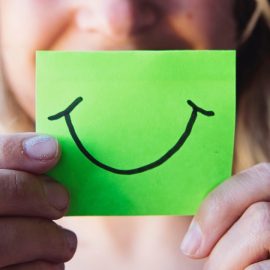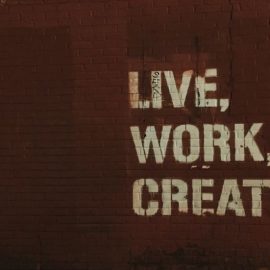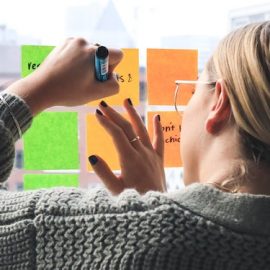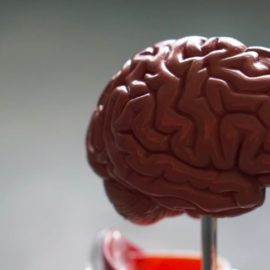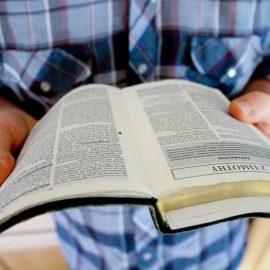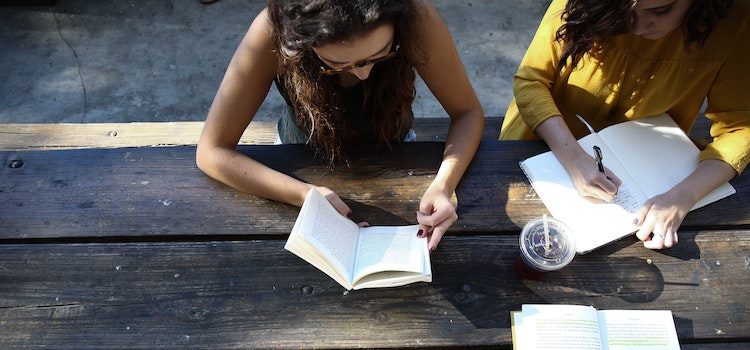
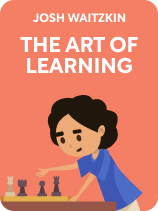
This article is an excerpt from the Shortform book guide to "The Art of Learning" by Josh Waitzkin. Shortform has the world's best summaries and analyses of books you should be reading.
Like this article? Sign up for a free trial here .
Does learning come easy to you? Would you like to learn better, faster, and more effectively?
According to Josh Waitzkin, effective learning comes from your deep commitment to your growth process. In his book The Art of Learning, he explains how to learn more effectively, drawing from his long experience as a world-class chess competitor.
Here’s how to learn better and faster, according to Josh Waitzkin.
The Art of Learning
The Art of Learning is about chess prodigy and tai chi champion Josh Waitzkin’s approach to learning and growth. He explains how to learn better and faster, building incrementally through intermediate to advanced strategies.
A prolific learner and competitor from a young age, Waitzkin has a lifetime of practical knowledge in skill-building. At 6 years old, he took on streetside chess hustlers in New York City’s Washington Square Park, and soon drew the attention of legendary chess coach Pandolfini, who became his first mentor.
At 11, Waitzkin drew a match with World Champion Garry Kasparov in a simultaneous exhibition (where a Master plays against several weaker players all at once). Through his childhood and teenage years, Waitzkin dominated the US Junior chess scene, winning multiple national championships and becoming an International Master by age 16.
(Shortform note: Hungarian chess teacher Laszlo Polgar holds that chess prodigies are raised, not born. While natural talent is key to becoming a young Grandmaster, Polgar argued that the keys to genius are fortunate circumstances and hard work. Research confirms this, showing that on average, young Masters practiced chess for around 20 hours a week for eight years before becoming Masters. Regarding favorable circumstances, the same study found that chess parents spend about $5,000 to $10,000 annually on lessons, travel, tournaments, and other resources.)
After a later coach disrupted his passion for chess, Waitzkin stepped away from chess and into tai chi. Under Grandmaster William Chi-Cheng Chen, he trained in Tai Chi Push Hands, the competitive variant of tai chi. Waitzkin brought to bear his talent for learning, became the US National Champion, and in 2004, won the World Championship in Taiwan.
Since then, he’s co-founded a Brazilian Jiu-Jitsu school with BJJ legend Marcelo Garcia (under whom he earned his BJJ black belt), and now offers personalized training for individuals in the finance, investment, and environmental impact sectors.
(Shortform note: Despite having written a book called The Art of Learning, Waitzkin doesn’t prescribe a set approach. Instead, he offers a reflection on what he learned while encouraging readers to experiment and develop their own methods. In interviews, Waitzkin says personalized training is superior to any set method, since everyone has unique needs, strengths, and preferences.)
Waitzkin argues that effective learning comes from a resilient commitment to your growth process. One step at a time, you can build your skills and your mindset, striving toward excellence—which ultimately means developing your personal approach to the skill you’re building.
Build a Strong Foundation
Waitzkin recommends starting with the fundamentals of your skill. Begin by studying the basic elements of your skill, one by one. Any skill is composed of simple, elemental chunks of know-how. For example, when learning to play basketball, you’d learn how to dribble, pass, shoot, and so on.
(Shortform note: In Fluent Forever, Gabriel Wyner explains that we should learn languages from the bottom up—starting with the sounds, moving to single words, then to grammatical patterns, and interspersing conversation practice to tie it all together. This is much like Waitzkin’s recommended approach: Practice one element at a time to build up your skill.)
Patiently practice each element until it becomes intuitive. Waitzkin calls this form to leave form: Through practice, a conscious effort becomes unconscious, or automatic. For example, if you drill 10,000 free throws, your form will eventually become second nature.
(Shortform note: Though Waitzkin doesn’t say it explicitly, this approach is much like deep practice. Deep practice is a way of learning that emphasizes patient, step-by-step refinement of one technique at a time.)
Once each element is intuitive, start combining them. Continue to practice until you can unconsciously coordinate multiple basic elements of your skill. For example, you might train in basketball techniques until you can stop on a dime, catch a bounce pass, dribble to the three-point line, and execute a free-throw.
(Shortform note: In The Talent Code, Daniel Coyle discusses how deep practice develops myelin more efficiently than unfocused practice. Myelin is a neural tissue that wraps around neurons or nerve cells, speeding and smoothing the signals that travel along those cells. The more myelin you’ve grown, the more automatically you can perform a practiced behavior. In other words, myelin makes your skills habit, or intuitive. This is the neuroscience of Waitzkin’s “form to leave form”: Dedicated practice of individual skills develops myelin, and well-myelinated skills feel like natural instinct.)
Develop Your Personal Style
In addition to achieving mastery, incremental skill-building also enables your unique style to emerge. When you intuitively understand the elements of a skill and their interrelationships, you can combine them in creative ways.
Waitzkin argues that we’re naturally drawn to particular skills. He doesn’t directly explain this, but we can infer that it’s a deep feeling, not conscious thought, that draws you in. For example, Waitzkin felt an intense resonance with chess from the first time he saw it played.
(Shortform note: While Waitzkin doesn’t explain how to find your personal style, you may already have a sense for it. Consider that you know what kind of music, food, clothing, and friends you like. Your taste suggests what you’re most drawn to, and it’s a good starting point for finding your style in a particular skill. Taste develops over time as we discover what we’re good at: As we get better at something, we tend to like it more, because we feel good about being able to process it fluently.)
Your personal style is how you instinctively approach the skill. For example, Waitzkin describes himself as having been a chaotic, rough-and-tumble kid—and his aggressive, attacking chess style reflected those traits.
According to Waitzkin, you must honor your personal style if you want to become truly great. That means developing your skill according to what most inspires you, so that you come to embody that skill as only you can.
Many famous athletes and musicians demonstrate this point—jazz trumpeter Louis Armstrong; Brazilian footballer Pelé; Olympians like Simone Biles and Serena Williams—each is known for their characteristic style. (Shortform note: Personal style is on full display in Olympic ice skating, where athletes compete in customized outfits, with personally selected music, using choreography tailored to their strengths and creative inclinations. Judges score ice skaters on two metrics that parallel Waitzkin’s technique-creativity dichotomy: their technical execution, and their artistry.)
Use Your Mistakes
As you develop your skill, you’ll face challenges that are beyond your current abilities. When you fall short, Waitzkin suggests that you pay attention to both the technical and the psychological aspects of your mistakes and use that feedback to improve.
There are two aspects of any weakness, and you need to grow through both:
- Technical errors are mistakes with form: You don’t understand some principle, so you fail to execute the proper techniques. For example, a novice piano player would struggle with complex five-finger chords—she just doesn’t have the technical capacity yet.
- Psychological errors concern your mindset and emotions. Oftentimes, strong negative emotions affect your performance, so you might blunder even though you know the right technique. Think of when professional athletes get frustrated and start to falter—this is an emotional problem, not a technical one.
Technical errors often entangle with psychological errors, Waitzkin argues. With this in mind, Waitzkin suggests identifying weaknesses by finding connections between your emotional life and your technical mistakes.
To find where you’re slipping up, look at what’s presently meaningful in your life. Ask: “What does my mind keep returning to?” After you identify the emotional theme, look at the technical mistake you are struggling with and see if there is a connection. For example, when Waitzkin was struggling with big life changes in the wake of “Searching for Bobby Fischer,” he also struggled to keep up with positional changes on the chess board.
By analyzing your mistakes, you’ll learn about principles and patterns that you couldn’t previously see. First you understand these new chunks mentally, or in words. But with enough study, Waitzkin explains, you reach an embodied knowing that goes beyond that propositional (thought-based) understanding. In other words, you can feel the principle or technique intuitively.
Waitzkin recommends periodically examining your skill set for weaknesses, as above, to keep your technique effective and your psychology robust. Each time you do this, you improve your intuition for that skill.

———End of Preview———
Like what you just read? Read the rest of the world's best book summary and analysis of Josh Waitzkin's "The Art of Learning" at Shortform .
Here's what you'll find in our full The Art of Learning summary :
- Life advice from chess prodigy and tai chi World Champion Josh Waitzkin
- Detailed looks at the psychological and technical sides of skill-building
- How to build any skill from the bottom-up

